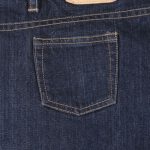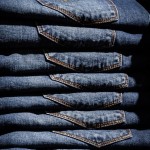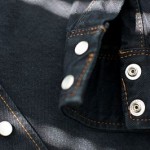
by MakeYourOwnJeans | jeans |
The holiday season is almost here. As we approach this joyful time of the year, you’ll probably want to buy gifts for your friends, family members and loved ones. Gift-giving is synonymous with the holiday season. It’s an age-old tradition that’s been practiced for well over a century. When buying gifts for the holiday season, though, you may want to choose jeans. Different people prefer different types of gifts. Nonetheless, there’s one gift that everyone is sure to appreciate: a pair of high-quality jeans. Everyone Loves Jeans Why are jeans the perfect gift for the holiday season? For starters, jeans are a practical gift that the recipient can actually use. Many people take the easy route during the holidays by choosing generic gifts that the recipient rarely or never uses. A better approach is to choose a practical gift — and no gift is more practical than a pair of high-quality jeans. Most people, of course, wear jeans in their daily outfits. Statistics show that the average person owns approximately seven pairs of jeans. Some people, in fact, own over a dozen pairs of jeans. Regardless of how many pairs of jeans the recipient already owns, he or she will almost certainly appreciate another pair of jeans. Everyone loves jeans. You can give the recipient a pair of jeans during the holiday season to make a lasting impact. Order Online Another reason to consider buying jeans as a holiday gift is that you can order them online. Retail stores will inevitably get crowded during the holiday season. And the closer we get to the end of the year, the...

by MakeYourOwnJeans | jeans |
Fraying is a common phenomenon with most types of trousers, including jeans. Jeans are made of denim. Over time, the individual cotton strands from which this denim is comprised may begin to unravel. When left unchecked, this can lead to fraying. The bottom of one or both pant legs may fray while becoming progressively worse. Just because it’s a common phenomenon, though, doesn’t mean it’s unavoidable. No matter what color or style your jeans are, there are steps you can take to prevent them from fraying at the bottom. This post offers tips on how to prevent your jeans from fraying at the bottom. Choose Heavyweight Jeans The weight of your jeans will affect their susceptibility of fraying at the bottom. Generally speaking, heavier jeans are less likely to fray at the bottom than lighter jeans. All jeans are made of denim. But the amount of denim used in their construction may vary. If you’re worried about fraying, choose a pair of heavyweight jeans consisting of more denim than lightweight jeans. Jeans made of 14 ounces of denim, for instance, are considered heavyweight. They are heavier than jeans made of just 10 or 12 ounces of denim. Therefore, they are less likely to fray at the bottom. Consider Selvedge You may want to consider selvedge denim jeans if you’re worried about them fraying at the bottom. Available for sale here at MakeYourOwnJeans, selvedge denim jeans are characterized by an old-style shuttle loom weaving process. They are made with the cross thread going back and forth. Other jeans, conversely, use a modern weaving process that doesn’t follow this same weaving...

by MakeYourOwnJeans | jeans |
Have you heard of overdyed jeans? They’ve become a popular alternative to traditional jeans. All jeans, of course, are dyed. They are made of denim, which is cotton with a warp-faced weaving pattern. In its natural state, cotton is white. To achieve a different color, such as indigo or black, it’s dyed. Overdyed jeans are simply dyed more heavily than their traditional counterparts. For a better understanding of overdyed jeans why they’ve become so popular, keep reading. What Are Overdyed Jeans? Overdyed jeans are characterized by their use of a large amount of dye during production. Nearly all jeans are dyed during production. Dyeing, of course, involves the use of colored liquid, known as dye, to change the color of a garment. In its natural state, cotton is white. To produce jeans in a different color, manufacturers must dye them. Overdyed jeans are simply exposed to a larger amount of dye during production than traditional jeans. Breaking Down the Dyeing Process In the past, most jeans were dyed with natural indigo. Natural indigo is a type of dark blue dye that’s derived from the dried leaves of an Asian plant called Indigofera tinctoria. Historians believe that natives have used this plant to create dye for centuries, with some of the earliest reports of its use dating back to the 8th century BC. In more recent years, though, natural indigo has been replaced with synthetic indigo. Synthetic indigo features a similar dark blue color as natural indigo. While natural indigo is derived from plant leaves, however, synthetic indigo is an artificial dye. Synthetic indigo consists of a similar color, and...

by MakeYourOwnJeans | jeans |
Do your jeans regularly suffer from static cling? It’s a common problem that affects nearly all types of clothes — and jeans are no exception. Static cling involves the buildup of static electricity. When static electricity builds up on the surface of a garment, it will create a charge that “pulls” other objects to it. Static cling can result in dust, debris and lint sticking to the surface of your jeans. Fortunately, you can prevent static cling by following a few tips. #1) Choose Heavyweight Jeans Heavyweight jeans are less likely to suffer from static cling than their lightweight counterparts. They are typically thicker and denser. With these properties, heavyweight jeans are better protected against static cling. If you’re shopping for a new pair of jeans but want to avoid the headache of static cling, check the weight of the denim. Heavyweight jeans are defined by their use of heavy denim. They are typically constructed of at least 14 ounces of high-quality denim. #2) Dry for a Shorter Period You can protect your jeans from static cling by drying them for a shorter period. Most people dry their jeans in a tumble clothes dryer. Tumble clothes dryers, of course, use heat to remove moisture from wet and recently washed clothes. In doing so, they leave clothes dry, which is a risk factor for static cling. Dry clothes, including dry jeans, can become statically charged more easily than moist or wet clothes. A simple solution is to dry your jeans for a shorter period. Rather than drying them for a full cycle, try drying your jeans for just 10 to...
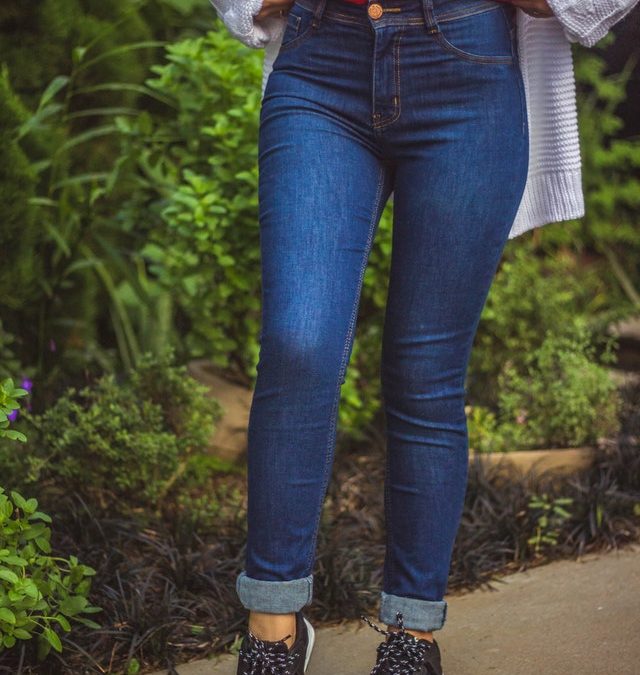
by MakeYourOwnJeans | jeans |
Do your jeans feel uncomfortably stiff? While denim is strong and durable, it’s not particularly stretchy. Rather, denim by itself is somewhat stiff, which can make standard jeans uncomfortable when worn for long periods. Fortunately, stretch jeans are available as a solution. Stretch jeans are still made of denim. All jeans are made of cotton-based denim — and stretch jeans are no exception. They are known as “stretch jeans,” however, because they are stretchier than standard jeans. Standard jeans are made entirely of denim, whereas stretch jeans are made of both denim and an elastic material. Not all stretch jeans are the same. You can find them in different colors. Along with blue, alternative colors in which stretch jeans are made include black, white, red, green and even yellow. You can also find them in different compositions, including 1% and 3%. Most stretch jeans can be classified as either 1% or 3%, depending on how they are constructed. When buying stretch jeans, you’ll need to decide whether 1% to 3% is right for you. What’s the difference between 1% and 3% stretch jeans exactly? Overview of 1% Stretch Jeans 1% stretch jeans are characterized by a composition consisting of 99% denim and 1% elastic material. They look like ordinary, standard jeans. While standard jeans are made entirely of denim, though, 1% stretch jeans have a small amount of an elastic material mixed into them. 1% stretch jeans are specifically made of 1% elastic material, hence their name. A typical pair of 1% stretch jeans will contain 1% lycra, polyester or a similar elastic material. It’s a small amount that...
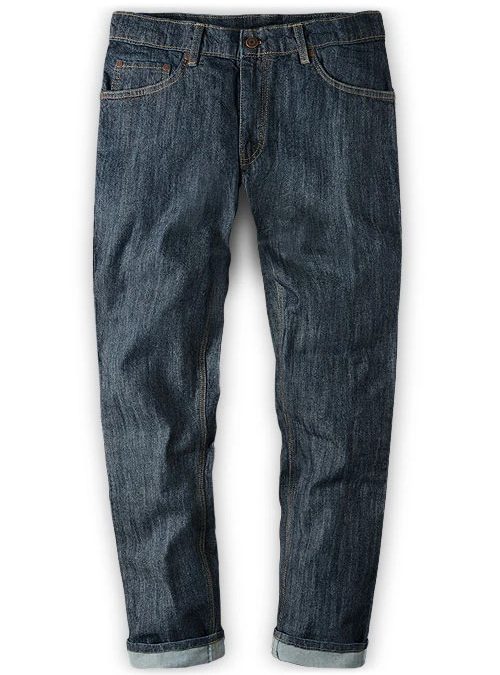
by MakeYourOwnJeans | jeans |
Jeans have been around for over a century. They were introduced in the mid-to-late 1800s, and since then, they’ve become recognized as the single most popular style of men’s and women’s trousers. When shopping for a new pair of jeans, however, you may come across slater jeans. Available for sale here at MakeYourOwnJeans, slater jeans feature the same appearance as traditional denim, but they are subtle nuances between them. What are slater jeans exactly, and why you should choose them? Overview of Slater Jeans Slater jeans are characterized by their use of slater denim. It’s a special type of premium, high-quality denim that’s generally heavier than other types of denim. Most slater jeans are made of 12 ounces of slater denim. With slater denim, they offer a stylish appearance while maintaining a strong and durable construction. Slater Jeans vs Traditional Jeans While they may look the same, slater jeans are different than traditional jeans. Traditional jeans are made of regular denim. All types of denim, of course, consist of cotton. This applies to both regular denim and slater denim. Whether you choose a pair of traditional jeans or slater jeans, chances are they’ll be made of cotton. Slater jeans are simply made of a more refined type of cotton-based denim, which is known as slater denim. Most slater jeans are hard washed. In other words, they are submerged in hot water during production. A process known as hard washing, it’s designed to soften the fabric from which they are made. Hard-washed jeans are almost always softer than their counterparts. When submerged in hot water, the otherwise stiff denim becomes...








